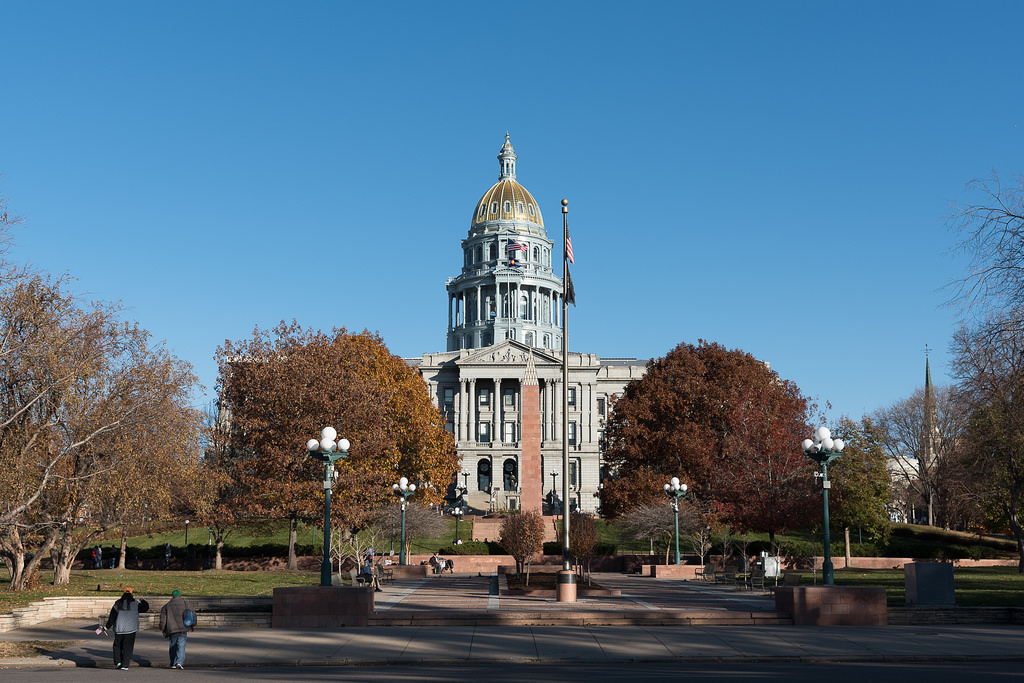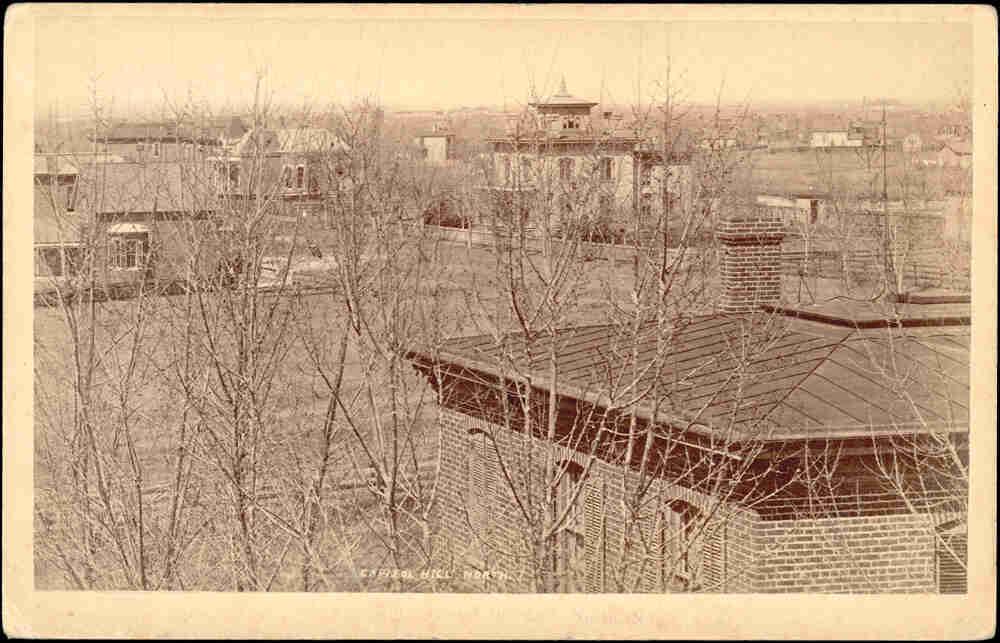Denver’s Capitol Hill
Full Article
The Capitol Hill neighborhood in Denver is bounded by Broadway Street, Downing Street, Colfax Avenue, and Seventh Avenue. It contains the Capitol Building and many other landmarks, including the Molly Brown House. The history and development of the Capitol Hill neighborhood serves as a microcosm for the history of Denver, and it remains one of the city’s most vibrant neighborhoods today.
In 1864, when Colorado was still a US territory, Henry C. Brown laid claim on a homestead on the 160 acres of land between Broadway, Logan, Nineteenth, and Eleventh Streets, far to the southeast of the city center along the South Platte River at Cherry Creek. In 1867 Brown donated ten acres of his land as a site for the territorial capitol building. Although he was a staunch supporter of making Denver the capital, Brown candidly admitted that his largesse was also an attempt to enhance the value of the rest of his property.
At the close of the 1870s Capitol Hill lacked improved streets or streetcar lines, and only a few people purchased lots and joined Brown on the open prairie. Brown had just sold his second home at Seventeenth and Broadway, along with forty lots, to mining magnate Horace Tabor. In the 1880s and early 1890s, Capitol Hill’s heyday, the gold and silver barons and those who sought to emulate them built ornate mansions up and down Capitol Hill’s streets, which at first were bare and dusty but later became tree-lined boulevards thanks to the efforts of people such as Robert Roeschlaub. When finally discovered by the wealthy, the neighborhood transformed rapidly. The following decade brought a real housing boom, and by the early 1890s Capitol Hill enjoyed a status as the most desirable address in Denver. Capitol Hill continued to draw the wealthy and the upwardly mobile well into the twentieth century.
The Capitol grounds received an upgrade in the early twentieth century thanks to Mayor Robert Speer’s endorsement of the City Beautiful Movement. By the 1930s many of wealthy moved on to the elite neighborhood near the Denver Country Club, and new subdivisions enticed the middle class to move to Capitol Hill. Depression-era economics forced the conversion of some Capitol Hill mansions into apartments and boardinghouses, a movement that accelerated in the post–World War II years as developers razed more and more of the now-too-large mansions and replaced them with hotels, apartments, and office buildings.
Per the Denver Planning Department, which calls Capitol Hill a “statistical planning unit,” the area’s borders are Broadway Street on the west, East Colfax on the north, Downing Street on the east, and East Seventh Avenue on the south. While the US Census Bureau follows the same basic outline, its “census tract” bulges slightly to the south and the west. For many others, including many of its residents, Capitol Hill encompasses a much larger area. The Capitol Hill United Neighbors (CHUN), the first neighborhood organization in the Denver metro area, claimed a vast area of inner-city Denver under its jurisdiction: from Broadway east to Colorado Boulevard, and from Twenty-Third Avenue south to First Avenue. This area includes such disparate neighborhoods as North Capitol Hill, Cherry Creek, City Park, the Denver Country Club, and the original Capitol Hill.
Such a mixture of neighborhoods reflects more than a simple geographical region. Over the years the term Capitol Hill has come to mean different things to different people. Indeed, many would agree with former CHUN president Mike Henry, who said that Capitol Hill is a “state of mind.” In other words, the Hill’s influence goes beyond any boundary lines drawn on a map.
 Capitol Hill remains one of Denver’s most diverse neighborhoods today. Capitol Hill proper is known as a hub of the city’s LGBT community. In keeping with the area’s inclusive tradition, the local newspaper Life on Capitol Hill serves ten neighborhoods. In addition to the state Capitol, other prominent attractions include Civic Center Park and the History Colorado Museum (formerly the museum of the Colorado Historical Society), as well as the Kirkland Museum of Fine and Decorative Art, the Art Institute of Colorado, and St. John’s Cathedral.
Capitol Hill remains one of Denver’s most diverse neighborhoods today. Capitol Hill proper is known as a hub of the city’s LGBT community. In keeping with the area’s inclusive tradition, the local newspaper Life on Capitol Hill serves ten neighborhoods. In addition to the state Capitol, other prominent attractions include Civic Center Park and the History Colorado Museum (formerly the museum of the Colorado Historical Society), as well as the Kirkland Museum of Fine and Decorative Art, the Art Institute of Colorado, and St. John’s Cathedral.
Adapted from Michael Shay, “Denver's Capitol Hill: Reflections of a Neighborhood,” Colorado Heritage 3, no. 4 (1983).




